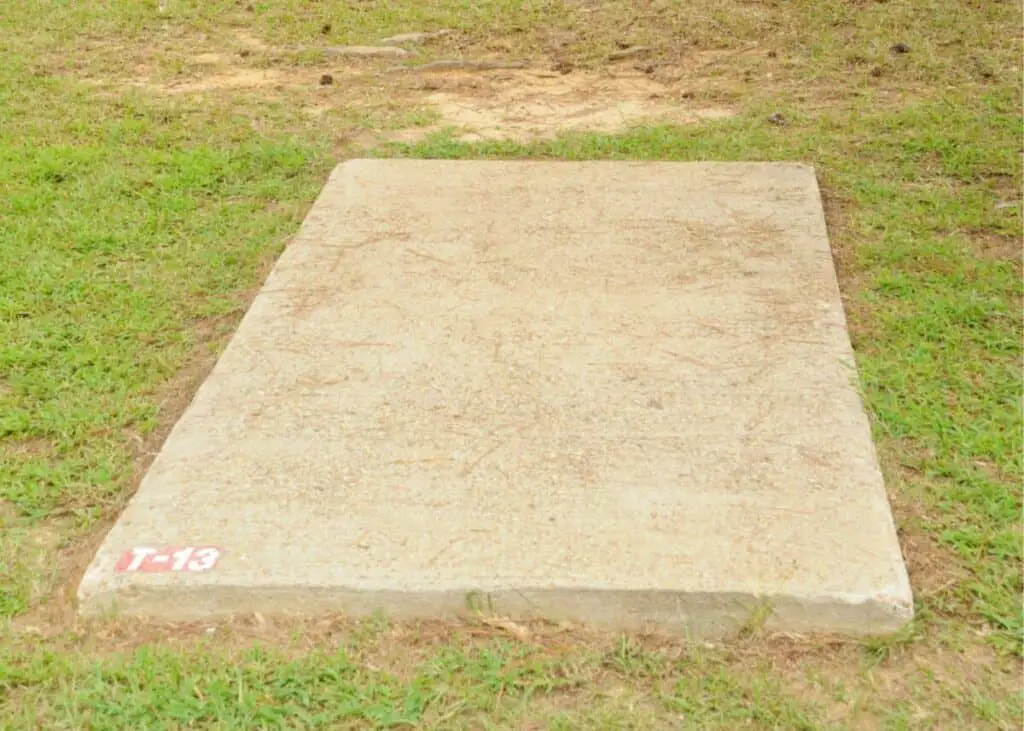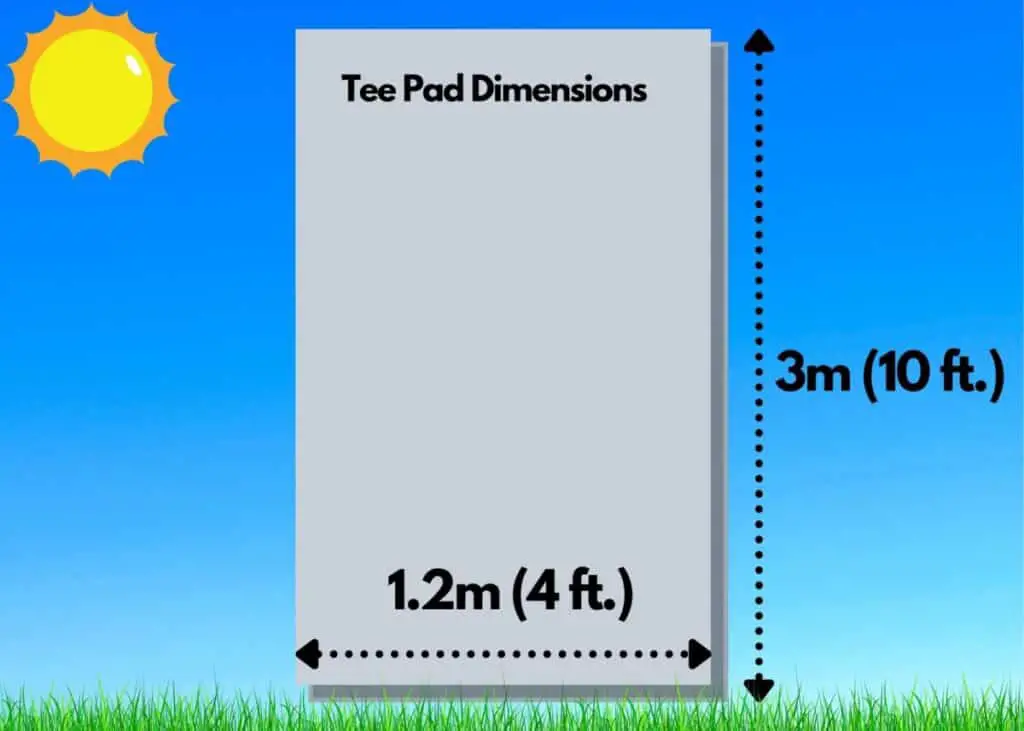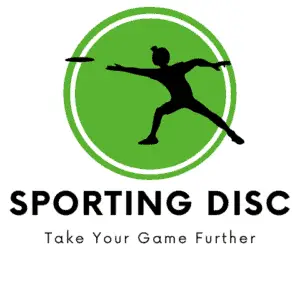Every hole on a disc golf course needs to have a starting point. But, this can be called by different names and made from different materials.
The tee pad in disc golf can vary a lot depending on the course. I’ll explain what a tee pad is and the different tee pad designs you might expect to see when playing disc golf.
Table of Contents
Here is What a Tee Pad is in Disc Golf
The tee pad in disc golf is the area where the first throw for each hole takes place. The tee pad extends 3 meters perpendicularly behind the front edge of the tee line. A player must remain on the tee pad when driving. A tee pad can be made from concrete, gravel, dirt, rubber, artificial turf, grass, or asphalt.
In this article, I’ll explain what a tee pad is and the rules for throwing from a tee pad in disc golf.

Do You Have to Use a Tee Pad in Disc Golf?
A tee pad is a nice feature to have on a disc golf course. It’s easy to identify where the start of each hole is and where to start your drive from.
If you’re playing a disc golf course you don’t necessarily have to use a tee pad to throw from, but you will have to throw from behind a designated tee line.
A disc golf course can use several different ways to mark a teeing area or tee line area. One course can even use different teeing areas from hole to hole. They don’t have to be uniform throughout the entire course.
If there is no designated tee pad, the teeing area will extend perpendicularly straight back 3 meters from the tee line. The line itself is a part of the teeing area too.
Some courses might also use a tee marker or tee sign. If this is the case, the teeing area will be to one side of the tee sign or marker and behind it.
Disc Golf Tee Pad Dimensions
The exact dimensions of a tee pad can change from course to course. The PDGA gives some guidelines that specify the minimum dimensions of a teeing area.
The rectangular teeing area will extend 3 meters (10 feet) in length by 1.2 meters wide (4 feet).

A tee pad should have at least a 2-foot clearing or apron on all sides of the teeing pad to give some room for you to follow through after driving from the tee pad.
The space directly behind the tee pad should also be clear to leave room for the run-up to the tee pad when driving.
Different Types of Tee Pads for Disc Golf
Tee pads can be all different types of materials or surfaces. Most disc golf courses are designed for public parks or public land, so often the tee pad can change depending on the amount of money available to build the course or the wishes of the municipality to alter the ground as little as possible.
According to the PDGA, the preferred method for building a tee pad is to use textured cement or artificial turf. A tee pad made from cement will typically be raised too.
Here are some of the tee pad types that you can find on many different disc golf courses.
- Concrete
- Dirt
- Grass
- Rubber Pad
- Artificial Turf
- Gravel
- Asphalt
- Tee marker
- Tee line
Rules For a Disc Golf Tee Pad
Unlike a throw from a lie in the fairway, a drop zone, or a short-range putt within the circle, the drive gives you a lot more leeway to follow through.
The reason for this is that players will need to build plenty of momentum and power into their throw to drive the disc as far as possible from the tee pad.
Disc golf rules say that at the time the disc is released from your hand, you must have all supporting points within the teeing area.
Immediately before or after the disc is released from your hand, you are allowed to have supporting points outside of the teeing area.
Why is this? This is because it will allow you to run-up to the teeing pad and then follow through once the disc has left your hand.
Even though you need to release the disc before crossing the front edge of the tee pad, you’re free to then cross that line to follow through.
What is a Supporting Point?
A supporting point is any part of your body that is touching, or in contact with the playing surface at the time of release.
Not surprisingly, a supporting point is a part of the body that provides support. Most commonly when it comes to driving from the tee pad it’s your feet that count as the supporting point.
There is a penalty for not following this rule too. In disc golf, it’s called a stance violation, or a foot fault. Each means the same thing and is normally a one-throw penalty.
Can You Throw From the Side of a Tee Pad in Disc Golf?
You can throw from the side of the tee pad, but at the time of release, your supporting points must be within the tee pad.
So, you don’t have to necessarily throw from directly in the center of the tee pad. You are free to throw from the sides.
What you’re not allowed to do is throw from the side of the tee pad without all your supporting points inside of the teeing area or tee pad at the time of release.
Final Thoughts | What is a Tee Pad in Disc Golf?
There are a lot of guidelines and rules in disc golf, but the tee pad has been left open to interpretation to give course designers the freedom to choose how they want their teeing area to look.
Whether the tee pad is first, grass, artificial turf, or textured cement. Every tee pad can look different. But, just remember that the rules for throwing from the tee pad are not different.
